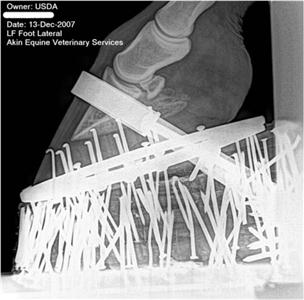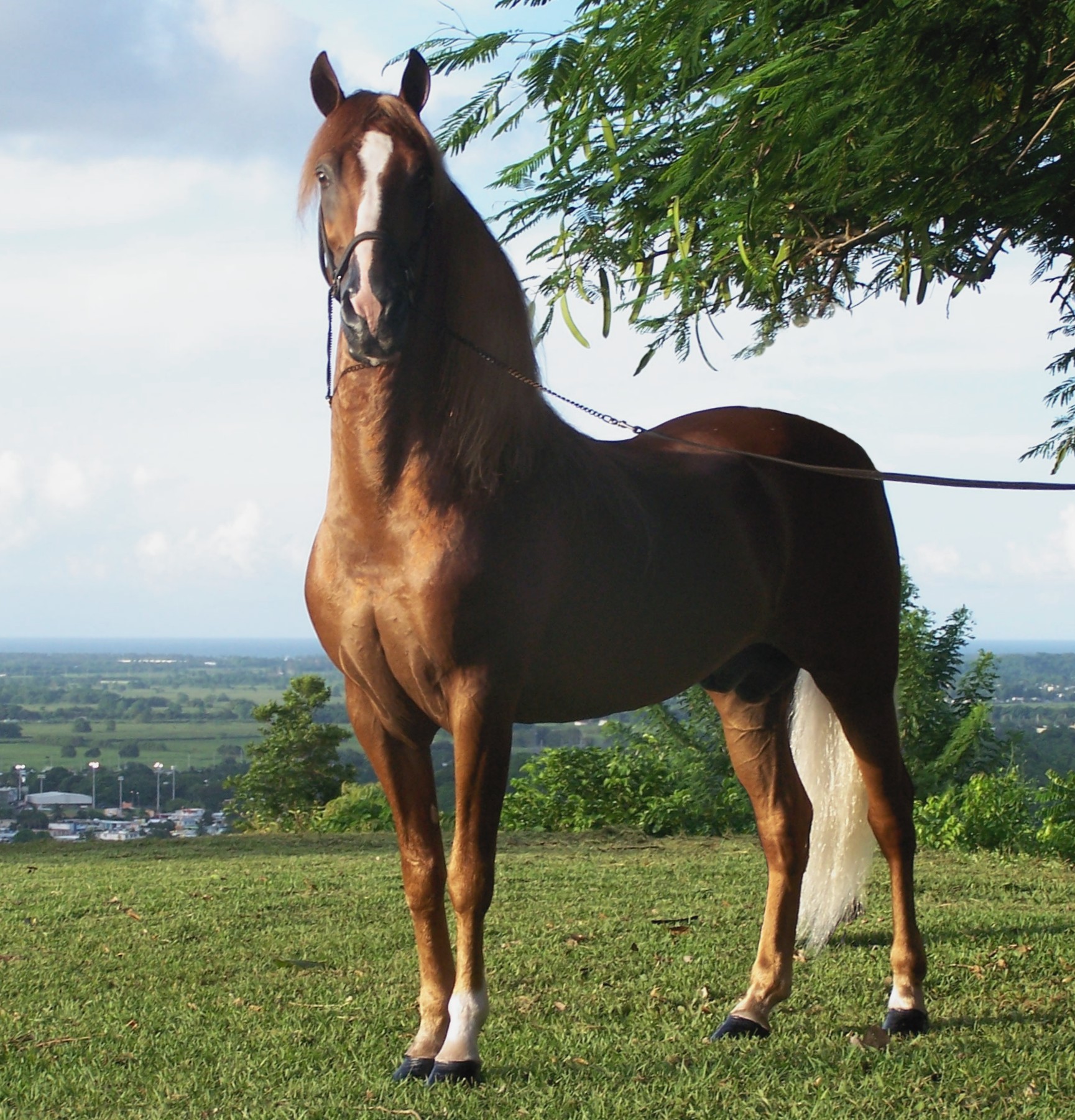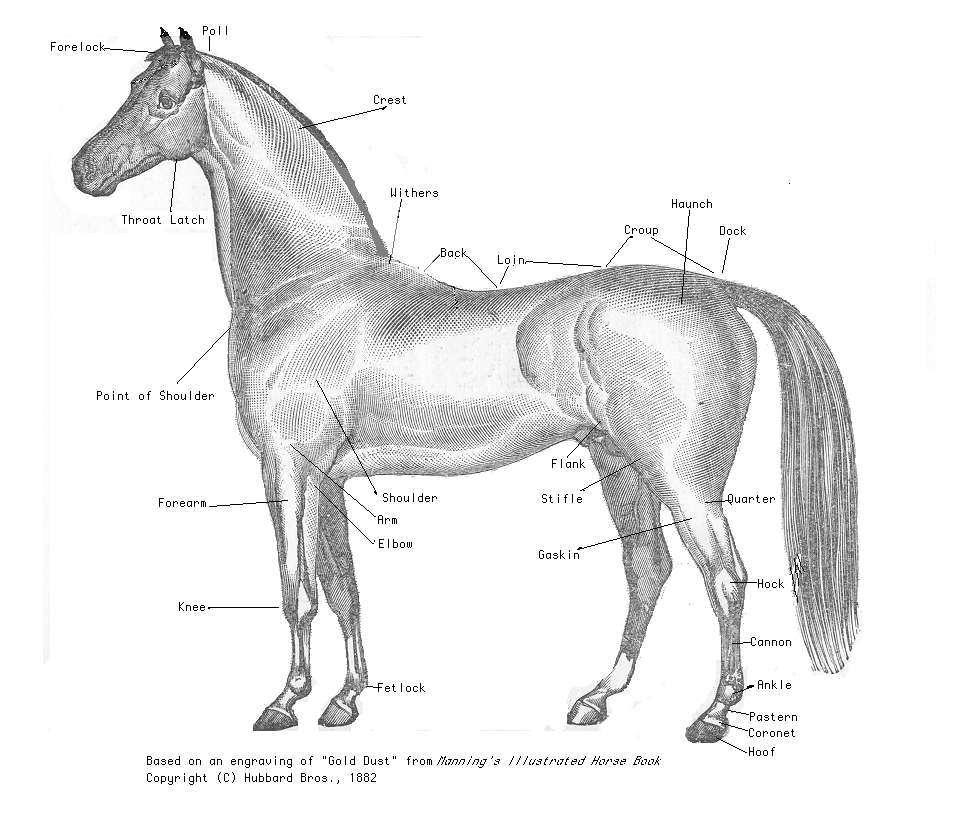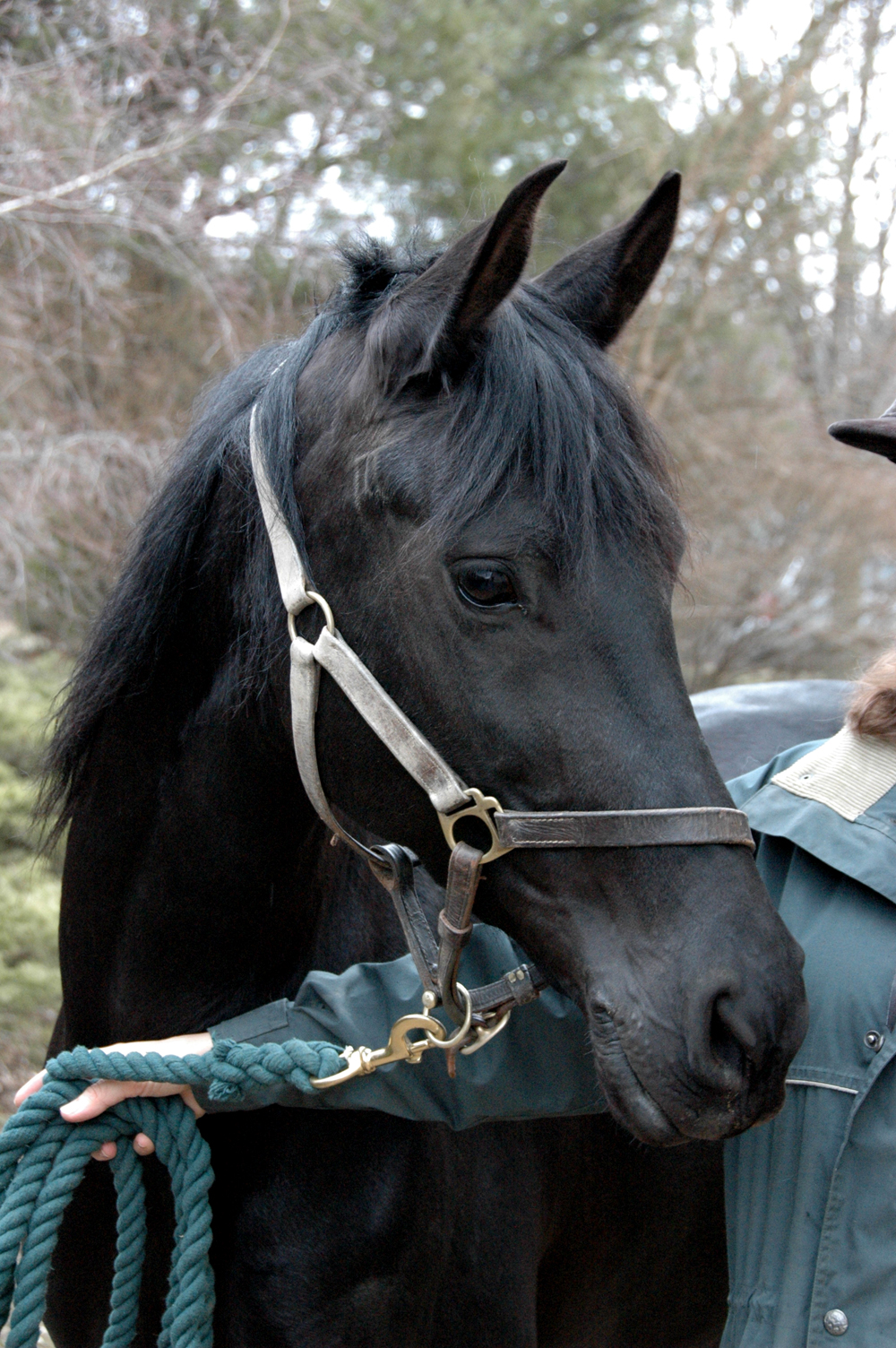|
Racking Horse Breeders' Association Of America
The Racking Horse Breeders' Association of America (RHBAA) is the original registry for the Racking Horse breed. It was formed in 1971 in Decatur, Alabama and is still located there. History The RHBAA was founded in April 1971 in Decatur, Alabama, and was recognized as an association by the USDA in May of the same year. It was organized by a group of horsemen who were interested in promoting a gaited horse that could be shown without the large action devices used on other breeds such as the Tennessee Walking Horse. There was also an interest in getting away from soring and violations of the Horse Protection Act which had been passed in 1970. The RHBAA began with the stated goal of promoting and preserving the attributes of the Racking Horse, as well as providing opportunities for amateur owners who were training their own horses with little or no professional help. Registration , the RHBAA has two methods of registering horses. The first is pedigree registration, by which a foal ... [...More Info...] [...Related Items...] OR: [Wikipedia] [Google] [Baidu] |
Decatur, Alabama
Decatur (dɪˈkeɪtə(r)) is the largest city and county seat of Morgan County (with a portion also in Limestone County) in the U.S. state of Alabama. Nicknamed "The River City", it is located in northern Alabama on the banks of Wheeler Lake, along the Tennessee River. The population in 2020 was 57,938. Decatur is the core city of the two-county large Decatur metropolitan area, which had an estimated population of 156,494 in 2020. Combined with the Huntsville Metropolitan Area, the two create the Huntsville-Decatur Combined Statistical Area, of which Decatur is the second-largest city. Like many southern cities in the early 19th century, Decatur's early success was based upon its location along a river. Railroad routes and boating traffic pushed the city to the front of North Alabama's economic atmosphere. The city rapidly grew into a large economic center within the Tennessee Valley and was a hub for travelers and cargo between Nashville and Mobile, as well as Chatta ... [...More Info...] [...Related Items...] OR: [Wikipedia] [Google] [Baidu] |
Racking Horse
The Racking Horse is a horse breed derived from the Tennessee Walking Horse, recognized by the USDA in 1971. It is known for a distinctive singlefoot gait. In 1971, the Racking Horse Breeders' Association of America, headquartered in Decatur, Alabama, was formed as the breed registry. Its goal is to preserve the breed in a natural state with little or no artificial devices that enhance gait. The horse's tail is naturally raised without nicking or tail sets. Some classes allow special shoes that enhance action, and a relatively newer class allows the use of chains, six ounces and under as action devices. The practice of soring, illegal under the Horse Protection Act of 1970, is also seen within the Racking Horse world. Since the breed's inception, about 80,000 Racking Horses have been registered, with the largest populations located in the US states of Alabama and Tennessee. Characteristics The Racking Horse is a light riding horse, standing an average of high and weighing ... [...More Info...] [...Related Items...] OR: [Wikipedia] [Google] [Baidu] |
USDA
The United States Department of Agriculture (USDA) is the federal executive department responsible for developing and executing federal laws related to farming, forestry, rural economic development, and food. It aims to meet the needs of commercial farming and livestock food production, promotes agricultural trade and production, works to assure food safety, protects natural resources, fosters rural communities and works to end hunger in the United States and internationally. It is headed by the Secretary of Agriculture, who reports directly to the President of the United States and is a member of the president's Cabinet. The current secretary is Tom Vilsack, who has served since February 24, 2021. Approximately 80% of the USDA's $141 billion budget goes to the Food and Nutrition Service (FNS) program. The largest component of the FNS budget is the Supplemental Nutrition Assistance Program (formerly known as the Food Stamp program), which is the cornerstone of USDA ... [...More Info...] [...Related Items...] OR: [Wikipedia] [Google] [Baidu] |
Tennessee Walking Horse
The Tennessee Walking Horse or Tennessee Walker is a breed of gaited horse known for its unique four-beat running-walk and flashy movement. It was originally developed as a riding horse on farms and plantations in the American South. It is a popular riding horse due to its calm disposition, smooth gaits and sure-footedness. The Tennessee Walking Horse is often seen in the show ring, but is also popular as a pleasure and trail riding horse using both English and Western equipment. Tennessee Walkers are also seen in movies, television, and other entertainment. The breed was developed beginning in the late 18th century when Narragansett Pacers and Canadian Pacers from the eastern United States were crossed with gaited Spanish Mustangs from Texas. Other breeds were later added, and in 1886 a foal named Black Allan was born. He is now considered the foundation sire of the breed. In 1935 the Tennessee Walking Horse Breeders' Association was formed, and it closed the studbo ... [...More Info...] [...Related Items...] OR: [Wikipedia] [Google] [Baidu] |
Soring
Soring, or "big lick", is the use of chemicals to cause pain to the front feet and legs of horses when they touch the ground. This results in the horses picking up their front feet higher and faster than they would do naturally. People who sore their horses believe that it gives them a competitive edge over other horses in the horse show ring. Soring is illegal in the U.S. under the Horse Protection Act of 1970. Tennessee walking horses are not allowed to be shown without passing an UDSA and HPA inspection for soring. Tennessee walking horses are not allowed to have scars on their pastern as it is considered associated with soring. Other breeds that have a history of soring including the Racking Horse and the Spotted Saddle Horse. Soring is often mistaken for padded performance. The pads, sometimes called "stacks", that are seen on Tennessee walking horses in padded performance are made of rubber and are light weight. When a Tennessee walking horse is seen wearing rubber pads they ... [...More Info...] [...Related Items...] OR: [Wikipedia] [Google] [Baidu] |
Horse Protection Act
The Horse Protection Act of 1970 (HPA); (codified ) is a United States federal law, under which the practice of soring is a crime punishable by both civil and criminal penalties, including fines and jail time. It is illegal to show a horse, enter it at a horse show, or to auction, sell, offer for sale, or transport a horse for any of these purposes if it has been sored. Soring is the practice of applying irritants or blistering agents to the front feet or forelegs of a horse, making it pick its feet up higher in an exaggerated manner that creates the movement or "action" desired in the show ring. Soring is an act of animal cruelty that gives practitioners an unfair advantage over other competitors. The Horse Protection Act of 1970 is enforced by the Animal and Plant Health Inspection Service (APHIS), a branch of the United States Department of Agriculture (USDA). Although violations of the law are seen most often in the Tennessee Walking Horse industry, the Horse Protection Act ... [...More Info...] [...Related Items...] OR: [Wikipedia] [Google] [Baidu] |
Mare
A mare is an adult female horse or other equine. In most cases, a mare is a female horse over the age of three, and a filly is a female horse three and younger. In Thoroughbred horse racing, a mare is defined as a female horse more than four years old. The word can also be used for other female equine animals, particularly mules and zebras, but a female donkey is usually called a "jenny". A broodmare is a mare used for breeding. A horse's female parent is known as its dam. Reproductive cycle Mares carry their young (called foals) for approximately 11 months from conception to birth. (Average range 320–370 days.)Ensminger, M. E. ''Horses and Horsemanship: Animal Agriculture Series.'' Sixth Edition. Interstate Publishers, 1990. p. 156 Usually just one young is born; twins are rare. When a domesticated mare foals, she nurses the foal for at least four to six months before it is weaned, though mares in the wild may allow a foal to nurse for up to a year. The estro ... [...More Info...] [...Related Items...] OR: [Wikipedia] [Google] [Baidu] |
Stallion
A stallion is a male horse that has not been gelded (castrated). Stallions follow the conformation and phenotype of their breed, but within that standard, the presence of hormones such as testosterone may give stallions a thicker, "cresty" neck, as well as a somewhat more muscular physique as compared to female horses, known as ''mares'', and castrated males, called ''geldings''. Temperament varies widely based on genetics, and training, but because of their instincts as herd animals, they may be prone to aggressive behavior, particularly toward other stallions, and thus require careful management by knowledgeable handlers. However, with proper training and management, stallions are effective equine athletes at the highest levels of many disciplines, including horse racing, horse shows, and international Olympic competition. "Stallion" is also used to refer to males of other equids, including zebras and donkeys. Herd behavior Contrary to popular myths, many stallions do no ... [...More Info...] [...Related Items...] OR: [Wikipedia] [Google] [Baidu] |
Equine Conformation
Equine conformation evaluates a horse's bone structure, musculature, and its body proportions in relation to each other. Undesirable conformation can limit the ability to perform a specific task. Although there are several faults with universal disadvantages, a horse's conformation is usually judged by what its intended use may be. Thus "form to function" is one of the first set of traits considered in judging conformation. A horse with poor form for a Grand Prix show jumper could have excellent conformation for a World Champion cutting horse, or to be a champion draft horse. Every horse has good and bad points of its conformation and many horses (including Olympic caliber horses) excel even with conformation faults. Conformation of the head and neck The standard of the ideal head varies dramatically from breed to breed based on a mixture of the role the horse is bred for and what breeders, owners and enthusiasts find appealing. Breed standards frequently cite large eyes, a ... [...More Info...] [...Related Items...] OR: [Wikipedia] [Google] [Baidu] |
Foal
A foal is an equine up to one year old; this term is used mainly for horses, but can be used for donkeys. More specific terms are colt for a male foal and filly for a female foal, and are used until the horse is three or four. When the foal is nursing from its dam (mother), it may also be called a "suckling". After it has been weaned from its dam, it may be called a " weanling". When a mare is pregnant, she is said to be "in foal". When the mare gives birth, she is "foaling", and the impending birth is usually stated as "to foal". A newborn horse is "foaled". After a horse is one year old, it is no longer a foal, and is a " yearling". There are no special age-related terms for young horses older than yearlings. When young horses reach breeding maturity, the terms change: a filly over three (four in horse racing) is called a mare, and a colt over three is called a stallion. A castrated male horse is called a gelding regardless of age; however, colloquially, the term "gelding ... [...More Info...] [...Related Items...] OR: [Wikipedia] [Google] [Baidu] |
Lead Rope
A lead, lead line, lead rope (US) or head collar rope (UK), is used to lead an animal such as a horse. Usually, it is attached to a halter. The lead may be integral to the halter or, more often, separate. When separate, it is attached to the halter with a heavy clip or snap so that it can be added or removed as needed. A related term, lead shank or lead chain refers to a lead line with a chain attached that is used in a variety of ways to safely control possibly difficult or dangerous horses if they will not respond to a regular lead. Variations A lead can be made from a variety of materials, including cotton, horsehair (woven or braided hair, usually from a horse's tail), leather, nylon or other synthetic materials. Lead ropes, as the name implies, are round and made of various types of rope, usually between 5/8 and 3/4 inch (about 2 cm) in diameter.http://www.sstack.com Halters and leads at Schneider's Saddlery Co. Lead lines are usually flat webbing or leat ... [...More Info...] [...Related Items...] OR: [Wikipedia] [Google] [Baidu] |
Racking Horse World Celebration
The Racking Horse World Celebration is the largest show for the Racking Horse breed. It is held annually in late September at the Celebration Arena in Priceville, Alabama, a few miles outside Decatur. The Celebration encompasses over a week of nightly shows, and includes approximately 170 classes. Over 1,000 horses compete there each year, and spectator attendance is roughly 70,000. The World Celebration's counterpart is the Spring Celebration, held in April at the same location. History The Celebration was started in 1972, not long after the formation of the Racking Horse Breeders' Association of America (RHBAA). Although most of the organizers were from Birmingham it was decided to hold the show in Priceville, which is in Morgan County, northern Alabama, because the horse center there was the best in the state at the time. The first Celebration lasted one day and included 23 classes. A total of 257 horses were shown. Many of the exhibitors and horses were from the Muscle Sho ... [...More Info...] [...Related Items...] OR: [Wikipedia] [Google] [Baidu] |




_(8536503249).jpg)



